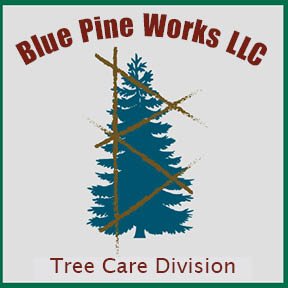Best Time of Year for Tree Trimming: Prepare Your Trees for Spring!
Are you wondering whether it’s time to prune your property’s trees? This is an important question to ask — after all, proper trimming affects more than just the tree’s aesthetics. When trees are pruned at the right time, property owners don’t have to worry about branches becoming hazardous or the tree dying prematurely.
Of course, you can’t prune trees willy-nilly. You need to have a strategic plan in place. Most tree care professionals say that winter is the best time of year for tree trimming, but as you will soon see, spring and summer are also viable options.
Let’s explore the ins and outs of tree trimming to help you decide when it’s time to call in the experts at Blue Pine Works LLC for proper pruning services.
Winter: The Best Time for Tree Trimming
When it comes to tree trimming, winter is king. During the dormant season, which typically spans from late fall to early spring in Pine City, Minnesota, trees are not actively growing. This dormant phase makes winter the ideal time for trimming branches. Why is this? Take a look at the top benefits of winter pruning:
Reduced Stress on Trees: When you trim trees during dormancy, the risk of damage or infection is significantly lower.
Better Visibility: With leaves gone, it’s much easier to see the tree’s structure. This makes it simpler to identify and address problematic tree branches.
Promotes Healthy Growth: Pruning in winter encourages vigorous growth as soon as the weather begins to warm. Plus, with diseased and dead branches gone, the tree can direct all its energy toward healthy development.
Fewer Pests and Diseases: Many pests and pathogens that attack trees are inactive during the winter months, reducing the risk of infestation or infection during trimming.
Why Spring or Summer Tree Trimming May Be Necessary
Although winter is the best time of year for tree trimming, there are certain circumstances when pruning in the spring or summer is unavoidable. For example, there is never a bad time to remove dead or diseased branches. By removing these limbs as soon as possible — whether that’s in late fall or early summer — you eliminate a potential hazard and put safety first.
You will also want to consider trimming trees that have grown too close to buildings, power lines, or other structures, even if it is spring or summer. In this way, you prevent costly accidents and maintain accessibility.
If you spot signs of disease or infestation during the growing season, prompt action is advised to prevent the problem from spreading. Your local arborist can assist you with summer and spring pruning to ensure the tree isn’t trimmed too much, causing stress and inhibiting growth.
Finally, if you have any spring flowering trees, such as cherry, magnolia, or dogwood trees, you will want to have them trimmed right after they’ve finished blooming, typically late spring to early summer. Fruit trees could also benefit from prunings during the growing season in addition to winter trimming to promote fruit production.
The Issues With Fall Trimming
Fall may seem like a convenient time for tree trimming, but it’s generally not recommended. Why? During the autumn months, trees enter dormancy and redirect their energy toward root growth and preparing for winter. Trimming during this time can disrupt this process and lead to an increased risk of disease from fungi and bacteria and a reduced healing ability.
If you’re unsure whether fall trimming is necessary, schedule a tree care consultation with Blue Pine Works LLC. Our certified arborist can assess your trees and recommend the best course of action.
Tree Trimming Tips to Prepare for the Upcoming Spring
The winter season has arrived, and spring is on the horizon. You know this is the best time to trim your property’s trees, but before you do so, keep these tips in mind:
Use the Right Tools: Clean, sharp tools are essential for making precise cuts that heal quickly.
Avoid Over-Trimming: Removing too much foliage can weaken the tree and disrupt its growth cycle.
Focus on Problematic Branches: Prioritize dead, diseased, or damaged branches, as well as those that cross or rub against each other.
Be Careful With Young Trees: Newly planted trees require very minimal pruning — if any — during the first two to three years. You should only remove dead or broken branches, as the trees are still recovering from the stress of transplanting.
Hire Certified Professionals: Tree trimming requires skill and expertise. Trusting the job to certified arborists guarantees the best results. At Blue Pine Works LLC, we offer pruning services, cabling and bracing solutions, and so much more to keep your trees thriving year-round.
Ready to Trim Your Trees? Call Blue Pine Works LLC
Determining the best time for tree trimming can be challenging without in-depth training and experience. Thankfully, Blue Pine Works LLC is here to help. Led by an ISA-certified arborist with over 15 years of experience, we’re dedicated to helping homeowners just like you maintain healthy, beautiful trees season after season.
Whether you need help trimming trees in the winter or require assistance evaluating the health of your tree in the summer, our highly trained professionals will provide landscape horticulture services without delay. Contact us today to schedule a consultation!

